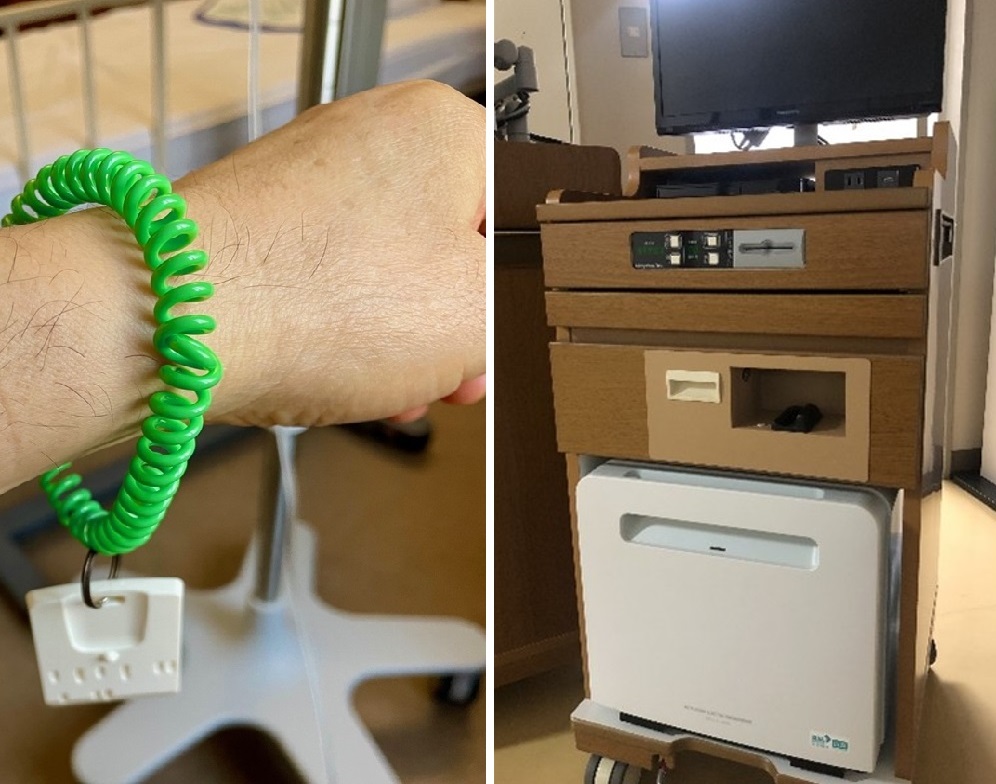2. Hospital Security
A couple of months before my recent hospitalization, I visited another large hospital to see a highly respected senior colleague. Even then, I had the same impression: Japanese hospitals operate under the assumption of inherent goodness in people.
The fact that there aren’t frequent major incidents is, in a sense, remarkable and may even be something we can be proud of as it reflects the goodness and sincerity of the Japanese people. However, from a security standpoint against malicious individuals, it feels quite inadequate.
*So far, I’ve been writing from the perspective of the peculiarities of “Japanese hospitals,” but since I’m not fully aware of the situation in hospitals overseas, there may be similar security risks in hospitals worldwide.
Let me share some of my security concerns as they come to mind:
- Hospital entrances: Security is very lax, allowing virtually anyone to enter the hospital and access any patient room.
- Patient rooms: Not only are the wards, but also private rooms are generally kept unlocked, allowing anyone to enter.
- From the elevator to the patient room: Even if there is a staff station on the way, people coming and going are not constantly checked, making it easy to pass through.
- Staff rotations: The staff who take care of patients during hospitalization change frequently, depending on shifts and days of the week. This means it could be difficult to detect if an imposter posing as staff enters the room.
- Valuables: It’s common practice to keep valuables in the drawer of the bedside table and lock it when leaving the room, carrying the key with you. However, when walking around with an IV drip, it’s cumbersome to carry the key on your wrist (see attached photo). For this reason, you don’t often see inpatients carrying the keys they (presumably) used to lock their drawers.
Now, regarding countermeasures for the above concerns:
- For concern 1, should the entry and exit checks be made stricter? Would this cause delays in the verification process or upset visitors with questions that feel condescending?
- For concern 2, should keeping patient rooms locked be the basic policy? Some patients may find it difficult to operate the locks, and it would increase the burden on staff who would have to unlock the room every time a visitor arrives. Would this add to the stress and workload of already busy staff?
- For concern 3, should the staff stations be turned into checkpoints? Should this be enforced 24 hours a day? This would require an increase in staff.
- For concern 4… What should be done?
- For concern 5, we take pride in the “hands-free, highly accurate” vein authentication-based locking function that we installed in all bedside tables at the University of Tokyo Hospital, which we announced to the press in April. (ref: Mofiria and Parth Japan developed a drawer lock that uses vein authentication of the fingers for locking and unlocking | Mofiria (mofiria.com)).
Regarding concerns 1 to 3, if there is enough funding, it could be possible to install countless surveillance cameras and patrol robots inside and outside the hospital to identify suspicious behavior using the latest AI technology.
However, since few facilities have such resources, I believe that if all concerns from 1 to 5 could be addressed through biometric authentication, it would simultaneously achieve comfort, convenience, safety, security, and cost efficiency! With this belief, I’m aiming to make positive use of my hospitalization experience.
We welcome partners who are willing to think and explore solutions together with us!




